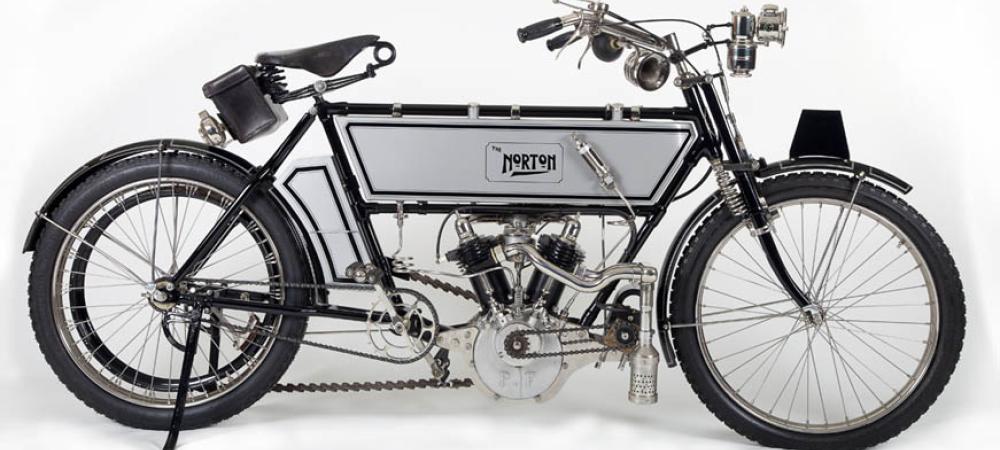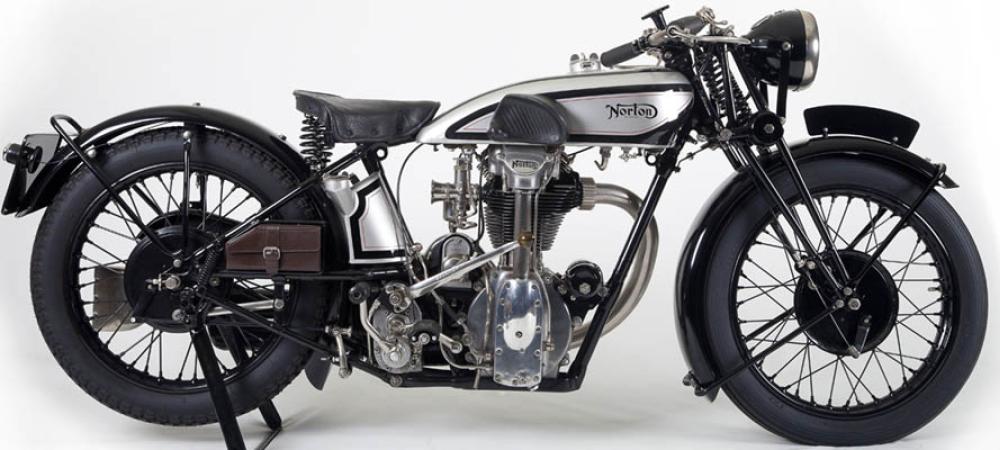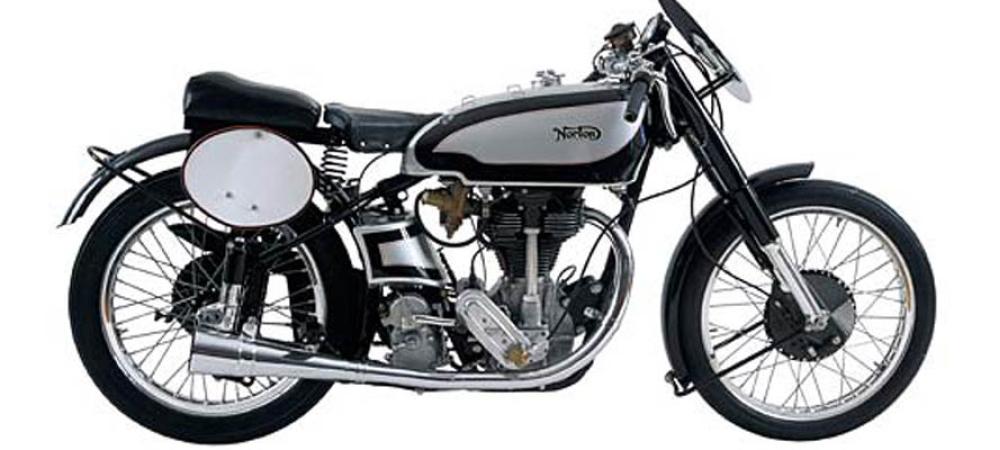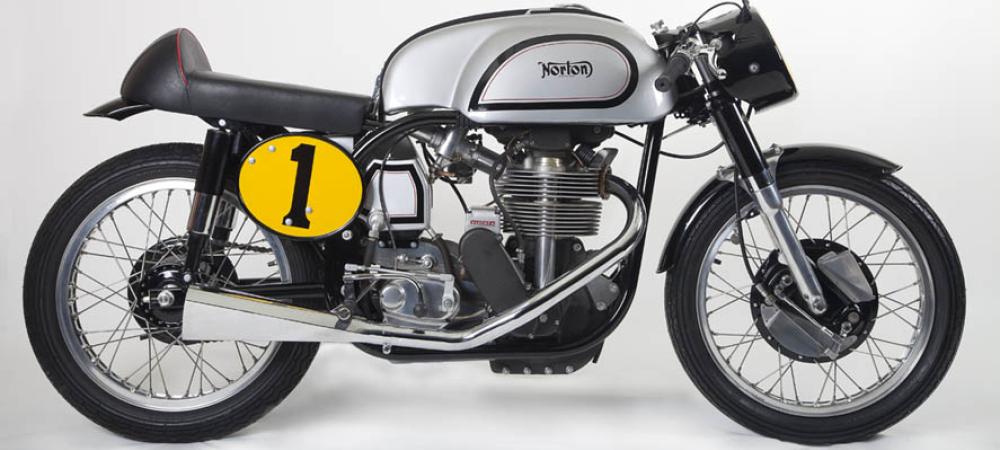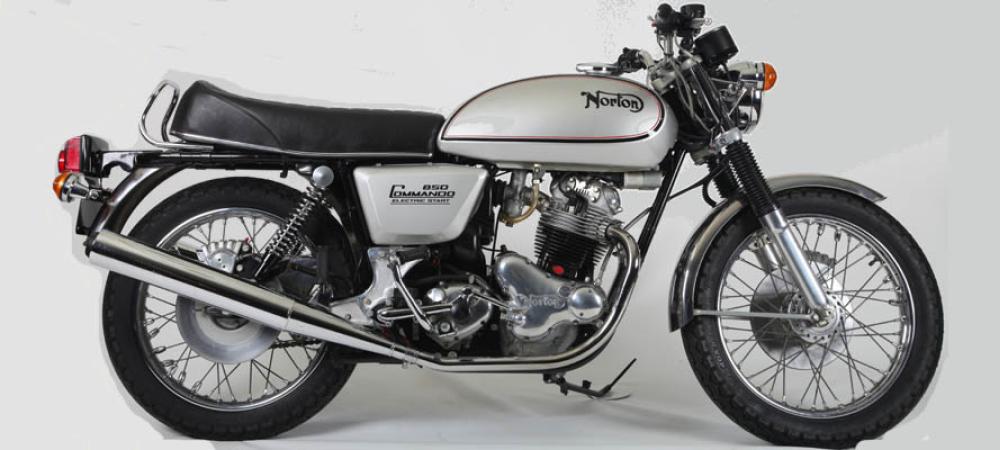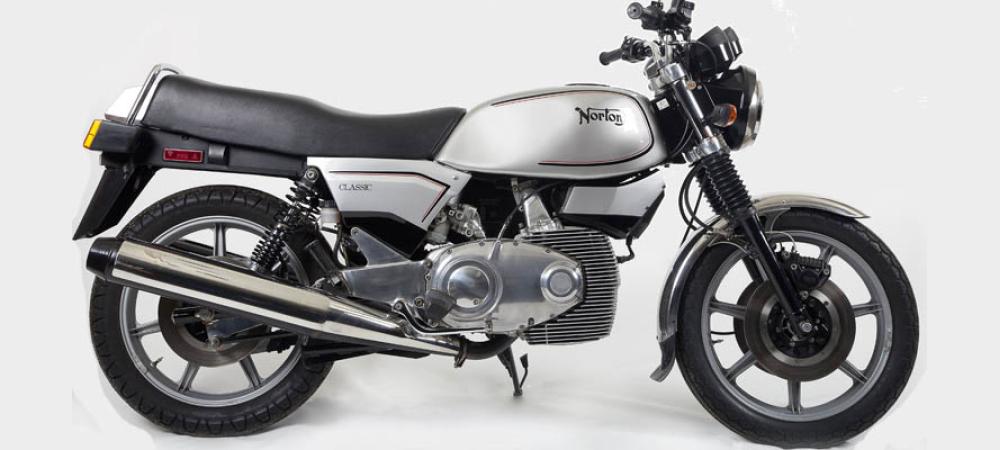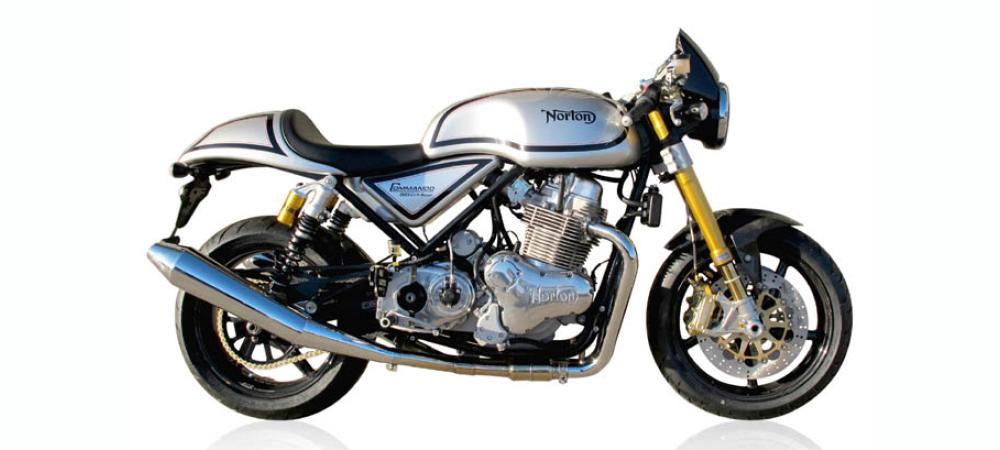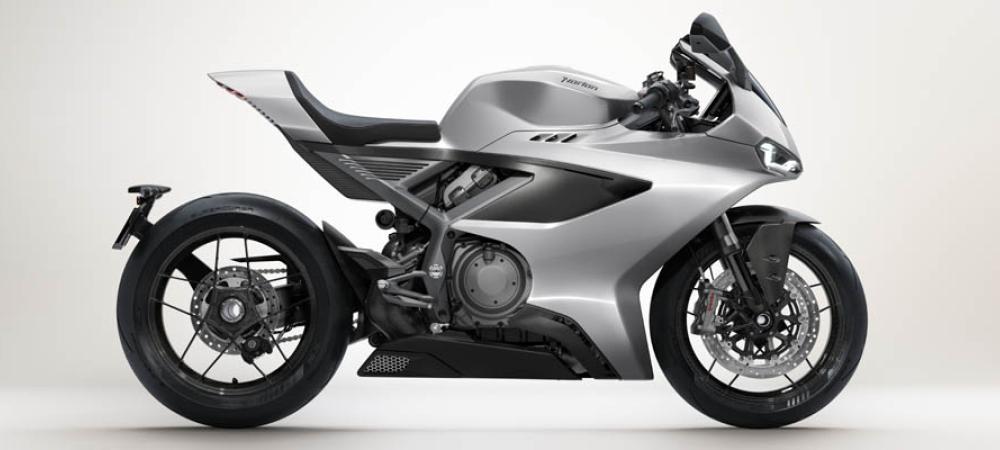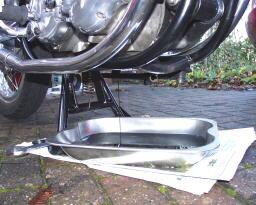A review of correspondence from Roadholder and NOC-L
When Norton twins are left standing for some time, oil drains from the tank to the sump. Anti-drain valves to prevent this are available; opinions as to their benefits vary wildly.
Disastrous failure of an anti-drain valve
When my Atlas snapped a con rod, I stripped it and there was no oil in the sump. Before I took out the crank and timing gear I turned the engine using a ratchet on the cam shaft. There was no oil coming out of the pump. I then replaced the one way valve with a straight through pipe and oil flowed.
My theory is:- This was the first long run since the engine was rebuilt 550 miles previously, so it was the first time the 20/50 oil got truly hot. I stopped for petrol and the valve would have closed. I started the engine, the valve did not open, so the timing side rod snapped 3 miles later.
Why did the valve not open? again I can only guess that there was not enough suction from the pump. Why? perhaps air was being drawn in from any of the four clipped connections which must be made when you put in a one way valve although I could not prove it had in my tests: or perhaps the valve got stuck. It did take more pressure to move the ball the first time than after I cleaned it.
It may be worth noting that I also have a Velo which has a one way valve as standard. The spring in this looks like a watch spring and needs much less pressure to move the ball than the one I got (which will not be going back in).
Peter Sprot (sales@millergraphics.com)on NOC-L 5th. Mar 1997
Anti-drain valves - not recommended
In my opinion, any non-return valve, on the suction side of a pump, i.e. between oil tank and pump, is a disaster just waiting to happen. I've seen in my workshop examples of Norton Twins, Triumph Twins and Triples, and an A65 BSA that had expired with bearing failure due to an aftermarket anti-wet-sumping valve not functioning. Although a crankcase full of oil is a real pain, a slight excess on start up after a period of standing is a positive advantage. The crankshaft will throw oil all over the crankcase components, resulting in excellent secondary lubrication. Cams and followers will especially benefit!
Philip Pick (p.m.pick@triples.demon.co.uk) on NOC-L 5th. Mar 1997
Anti-drain valve - used without any problems
I have been using anti-drain valves in a number of bikes for a long time with no problem. I do several things to make sure that I don't have problems. I only use anti-drain valves from Velocettes or a new anti-drain valve that uses the same ball and spring as the Velo. Where I do use an anti-drain valve, I also run an oil pressure gauge on anything other than my Velos. I have never had one of the Velo valves stick, but the gauge makes me feel better.
Brian Tyree (mcdonald.tyree@worldnet.att.net) on NOC-L 6th. Mar 1997
Wet sumping prevention - electrical interlock to a manual valve
I am at present investigating the possibility of utilising or manufacturing a manual valve incorporating a micro-switch, which can be connected in series to the ignition circuit, thus preventing driving off with the sod still closed. I have sourced a miniature valve which is too small and another which could pass about 400 gal (UK not US) a minute (both with switches). I am still hunting for the ideal candidate - knowing my luck, I'll have to make it from scratch.
Lawrence Ward (holyx@rmplc.co.uk) on NOC-L 11th.. Mar 1997
Anti-drain valve with ignition interlock- a possible source
There was an advertisement in the AJS & Matchless Owners club magazine for an anti-sumping valve fitted with ignition cut-out switch, for AMC singles & twins. Whether this is suitable for Nortons, I don't know.
Details can be obtained from: A. Dove on 01922 623571(evenings) or 01902 451281(days).
Ronald Whiteman (100623.734@compuserve.com) on NOC-L 12th. Mar 1997
Anti-drain valves - must default to 'open' on failure
Things designed to prevent oil from going through your oil pump always make me wonder, no matter how ingenious they may be. Ought can fail. This is the problem with all these valve things. The only really safe option is a valve which has a default setting of OPEN, i.e. one which needs a power supply to it, to keep it closed. But that in itself, defeats the object of the valve.
D.J. Walker (djw12@leicester.ac.uk) on NOC-L 12th. Mar 1997
Wet sumping prevention - mechanical interlock to a manual valve
One possible alternative would be to arrange your valve so when you turn it to the off position the lever blocks the ignition switch so you can't put the key in. Fewer things to go wrong, and considering the odd places some of our bikes have their ignition switches now, probably not that much less convenient.
A similar principle is used on some Cessna planes, where installing the locking device designed to immobilize the controls between flights also places a red flag in front of the ignition switch.
Mike Taglieri (miketync@aol.com) on NOC-L 12th. Mar 1997
Wet sumping prevention - electrical interlock to a pressure switch in the oil line
A different approach would be to put a cut out switch at the end of the line (off the rocker feed) so that any loss of oil pressure would kill the ignition. The only problem with this method is the need for a momentary bypass for startup, otherwise you would have to kick until you had enough pressure to trigger the switch. Using this method you wouldn't lose a motor for lack of pressure, regardless of what caused it.
Ken Dubey (kdubey@exchange1.pria.com) on NOC-L 12th. Mar 1997
Wet sumping prevention - a low-tech but simple approach
I've seen keys on the end of chains which were just long enough to reach the ignition switch when the oil valve lever is swung over to the open position, and chains between the lever and the kick-starter. Admittedly low tech, but effective, I suppose....
Greg Meyers (advo@mail.cloudnet.com) on NOC-L 12th. Mar 1997
Leaving the engine on the compression stroke prevents wet sumping
Before rebuilding your pump, or in the interim period, you might want to try something a little more simple first. Change the engine oil to a good SAE 50 monograde such as Pennzoil. When you leave your bike standing for any length of time, gently move the kickstart so as to leave your engine on the compression stroke.
Failing the success of these simple interventions, consider rebuilding the oil pump rather that using an in-line anti-wet sumping valve. This list has heard of too many horror stories of these on the Commando.
Adrian Morgan (a.morgan@cowan.edu.au) on NOC-L 9th. Nov 1997
Compression stroke method - another recommendation
My bikes take about 2 weeks to drain the oil tank and I use 50W monograde and I try to remember to leave them on the compression stroke. I am interested in hearing from others if they have ever had any problems that could be attributed to starting a Norton with a full sump. I don't worry about it myself, other than taking care to keep the revs down and allow the bike to idle until all the excess oil has returned to the tank. This has worked for me for many years. Of course if you live in a cold part of the world kicking a bike with a sump full of thick oil would probably be an impossible task.
Gary Slabaugh (gdslabaugh@sprintmail.com) on NOC-L 10th. Nov 1997
Oil pump modification to prevent wet sumping - a product recommendation
| "When you leave your bike standing for any length of time, gently move the kickstart so as to leave your engine on the compression stroke" |
I first came across this suggestion in the Norton News about eight years ago and scoffed at it as silly. But as my Nortech modified oil pump and timing cover had failed to stop wet sumping as advertised, one day I gave it a try. Lo and behold, it worked! Now I always bring it up on compression as soon as I shut the motor off. This doesn't completely end the draining, but it sure does slow it down.
For those of you scratching your heads and wondering what I meant by Nortech: from perhaps 1984 to 1994 this outfit ran an ad in the Norton News with the heading Is Your Norton Dumping its Load?. They offered a service which included rebuilding the oil pump with internal seals to prevent cross-leakage from feed to return side, and machining of the timing cover to include a one-way ball-check valve, which I believe is similar to the design Norton themselves came up with for the 1975 Mk.lll models. It all makes sense, but as I indicated, my results were not what I hoped for. Efficacy of the timing cover modification depends on the seal of the ball against the famous Norton oil pump output grommet. Nortech supplied a special one, and failed to reply to my request for additional ones or information on use of standard Norton grommets. Years after installing the Nortech setup, I suffered a clogged oil filter, and in the process of diagnosing the problem, I tried to take the oil pump apart but Nortech had tightened the screws so hard I could not shift them at all. I didn't suspect a problem in the pump and as it turned out there was none, but I would have liked to see what their work looked like.
Although they no longer advertise, they are listed in the last INOA Directory:
Nortech Engineering, Box D-29, Vail, Arizona 85641 U.S.A.
Ben English (ben.english@dmvms.mailnet.state.ny.us) on NOC-L 10th. Nov 1997
Anti-drain valve - used without any problems
Buy yourself an automatic non return valve. I have had one on my Commando for the last 15 months with no problems.
Roy Lee (hoyles-norton@hoyles-norton.demon.co.uk) on NOC-L 11th. Nov 1997
Anti-drain valve - never again!
I bought a non-return valve and the engine seized, snapping the con rod 50 miles after putting it in (the spring was too stiff). I now find it reassuring to have the smoke telling me I have lots of oil splashing around when I first start the bike!
Peter Sprot (sales@millergraphics.com) on NOC-L 11th. Nov 1997
Anti-drain valve - another never again!
The contents of the oil tank drained far too readily into the sump, so I fitted the anti-drain valve which I had set aside when I renewed the pipework. A further 20 miles and the engine seized. Being three miles from home at the time I made another mistake by waiting for the engine to free and proceeding gingerly . Sadly the next seizure was sudden, with the conrod caught in two minds whether to stay with the piston or the crankshaft - it snapped.
John Davey (john.davey@arup.com) on NOC-L 3rd. Jan 1998
Anti-drain valve - a happy customer
To add to the controversy I have been using a number of anti-drain valves in bikes without trouble for years. I have one on a Model 19, a 90o Atlas, the one that came originally on my Mk.lll Commando, and also 4 Velocettes). I do however not trust them completely and I run an oil pressure gauge on all of the twins. The oil pressure gauge has saved one of my motors when the feed to the valves split. The anti drain valves that I have been using are the Velocette type that I have bought from Hemmings; they seem to work fine.
Brian Tyree (mcdonald.tyree@worldnet.att.net) on NOC-L 6th. Jan 1998
Anti-drain valves - beware airlocks in the oil lines
I too have a Velocette anti-drain valve fitted to my 600cc twin. I use Castor R40 and even though it can get quite thick when cold, I have had no problems at all over the last six years of use. The Velo valve fits very nicely into the standard Norton featherbed oil tank with just a requirement for a thread adapter to bring the small thread size of the valve up to that of the oil tank outlet (it even looks the part).
I have never heard of a Velo owner having a problem with the stock anti-drain valves, fitted I believe as standard to the bottom of most Velocettes; perhaps Velo knew how to make them, and the pattern parts boys of today have got it wrong.
But beware on fitting any type of anti-drain valve, you must prime the line with oil, or you run the risk of getting the oil feed line air locked, and then a severe shortage of oil to the pump, followed shortly by a big bang!
Eddie Stephenson (esteph@globalnet.co.uk) on NOC-L 9th. Jan 1998
Anti-drain valves - more about airlocks in the oil line
Further to my earlier tale of engine seizure following the fitting of an anti-drain valve in the oil tank to engine oil supply line, I have a theory as to why mine caused trouble while others work perfectly well.
The oil supply line on my 1972 Commando is somewhat 'S' shaped at the best of times. Having fitted the valve via a short length of pipe to the bottom of the oil tank, I then squirted oil into the main length of pipe before attaching it to the valve. However, I fear that with the open end of the pipe quite low down at the time I attempted to fill it with oil, the exaggerated 'S' shape could have trapped an air pocket, giving me a false impression that the pipe was full. Given that the reason for fitting the valve was the fact that the oil pump was 'loose' it would then have had little chance of sucking hard enough to open the valve.
John Davey (john.davey@arup.com) on NOC-L 9th. Jan 1998
Lapping the oil pump
I always heard that the best way to minimize wet sumping was to service the oil pump. This is done by removing the pump, taking it apart, and reducing the width of the body by rubbing it on fine abrasive paper supported on a surface plate (or a sheet of plate glass). The thickness should be reduced until the end play on the gears is removed, since this is where the oil leaks by in wet sumping. Obviously everything must be washed very thoroughly in petrol before reassembly, and the parts should then be lubed in clean engine oil prior to putting it together. The pump may seem a little stiff to turn when the screws are tightened, but this should ease as the pump is turned and oil squirted into it. Oh, and before we get back to the discussion on use of abrasives on engine parts, remember the pump is cast iron and steel, not aluminium.
Colin Sharpe (sharpe_colin@videojet.com) on NOC-L 17th. Jan 1998
Crankcase pressure will increase with wet sumping
Too much oil in the crankcase will significantly raise the crankcase pressure. If the breather can't cope with this pressure (it may be a more of a problem on earlier models with the smaller diameter timed breather), the oil will try to find another way out. Frequently this is the drive-side crankcase seal, and the primary fills up with engine oil. This is a definite problem if you're running a different grade of oil in the primary, and a weak or ruptured seal is going to pressurise the primary, forcing oil out there too. If you think this may be happening to your bike, keep an eye on the oil level in the primary.
Robert Smith (robert@smith.bc.ca) on NOC-L 18th. Aug 1998
Can the engine be run without draining the oil, after wet sumping?
The collective wisdom is to go easy. A crankcase full of oil is OK, as long as there is some oil going to the supply side of the oil pump i.e. some in the oil tank. Even if the tank is dry the scavenger side outpumps the supply side, so the tank should fill up in short order. When my Commando is in the fully wet sumped mode, I crank it up, feather the throttle gently, let it run for a while the shut it down for a look see. Invariably there is a full oil tank, and off I go.
Jeff Bean (bucbean@pipeline.com) on NOC-L 18th. Aug 1998
Another nasty anti-drain valve experience
Someone told me that if you crank the bike up to compression when it sits then you will not wet sump
The theory is that with the big ends elevated there are less orifices to wet sump from. Two solutions present themselves, ride it more or fit an anti-drain valve making sure to avoid the one the NOC offered a few years ago. It had a spring rate far too high. My Commando lasted 300 miles after I fitted one.
Treve Whitford (magdis@nortonownersclub.org) on NOC-L 18th. Aug 1998
Wet sumping - a description of the problem
Wet sump means a 'wet sump' vs. a 'dry sump' which is the way things should be. Your bike should at all times have for all practical purposes no oil in the crankcase cavity. Unlike your car or friendly Asian bike your crankshaft and various other innards are not splashing around in an oil bath. Lubrication is fed under pressure by a pump that is fed by a supply (oil tank) to the various critical friction points within your engine.
The 'used' oil falls down into your crankcase (sump) and is rapidly pumped back into your oil tank by the 'scavenger pump'. The smart guys in England designed a duplex pumping system in which the 'scavenger pump' outpumps the 'supply' pump...hence the sump runs 'dry' (of oil that is).
Now, for a variety of reasons (gravity not the least), when we park our Nortons, oils drains out of our oil tanks (where it is supposed to sleep) down into our crankcase cavities - voila 'wet sumping'.
When you go to crank up your wet sumped bike that oil is going to get the hell out of there for a couple of reasons. First, the scavenger side of the oil pump will be doing its job. Secondly the periodic pressurisation of the crankcase cavities created by the piston downstrokes will do its 'prodding' (OOPS! more oil everywhere!!!). I've never had a problem with wet sumping, though my Norton has always wet sumped. As long as you check you oil after running your bike after storage to eliminate any mis-readings on oil levels and subsequent over fillings, I think you'll be OK.
Jeff Bean (bucbean@pipeline.com) on NOC-L 19th. Aug 1998
Wet sumping - it doesn't do any damage
I don't think anything really bad can happen due to wet sumping, otherwise Norton would have had to have done something about it. It's just the leaks are aesthetically unappealing. Oil will flow adequately, and the problem is self-correcting when the motor is used. Just check the oil level, after the sump has cleared. Bad cases may involve emptying the chaincase too.
Jordan Princic (jordan@zip.com.au) on NOC-L 19th. Aug 1998
Oil drain to the primary chaincase
I have owned my 1974 850 Commando for just over 2 years and when I first got it I fell for the low oil tank level and promptly spilled oil everywhere out from the air filter. Over the last year I have noticed extra oil in the primary chaincase, not a lot but definitely some extra. I was a little concerned that the oil usage was a little high but nothing serious as there was no smoke and compression seemed great. I came to the same conclusion (a weak oil seal on the primary side). Before I go hunting for a workshop manual can anyone tell me- am I looking at a crank out job to replace the lousy oil seal?
Phill Evans(evanspa@mpx.com.au) on NOC-L 19th. Aug 1998
A manual valve solution to wet sumping
Wet-sumping has always been a pain for me as well on my 1974 850 Roadster. I've decided to try a suggestion offered by Mike Taglieri, involving the installation of a manual shutoff valve (3/8" ball valve with barbed hose fittings) in the line between the oil tank and the pump suction. The valve handle should be drilled through at its end to tie the ignition key to (light weight steel cable).
The key won't reach the ignition switch until the valve handle is turned down to the fully open position. If you forget to close the valve at the end of your ride, no big deal. It's a pretty positive, low risk, and cheap method of dealing with the problem. I picked up a 3/8" full port 400lb. WOG ball valve for US$8.00 and a pair of threaded brass barbed hose fittings for another buck.
Bill Larson (william_larson@aar.com) on NOC-L 26th. Aug 1998
Oil pressure increased after gear pump maintenance
Wet sumping aside, a case might be made for periodic gear lapping just to maintain proper oil pressure. Recently a local Norton owner installed an oil pressure gauge on his Commando only to find the readings were 40 p.s.i. cold and 8-10 p.s.i. hot. Shimming the relief valve did not improve things but careful lapping brought the pressure up to 65 p.s.i. cold and 35-40 p.s.i. hot.
Pete Serrino (serrinop@ehsct7.envmed.rochester.edu) on NOC-L 26th. Aug 1998

